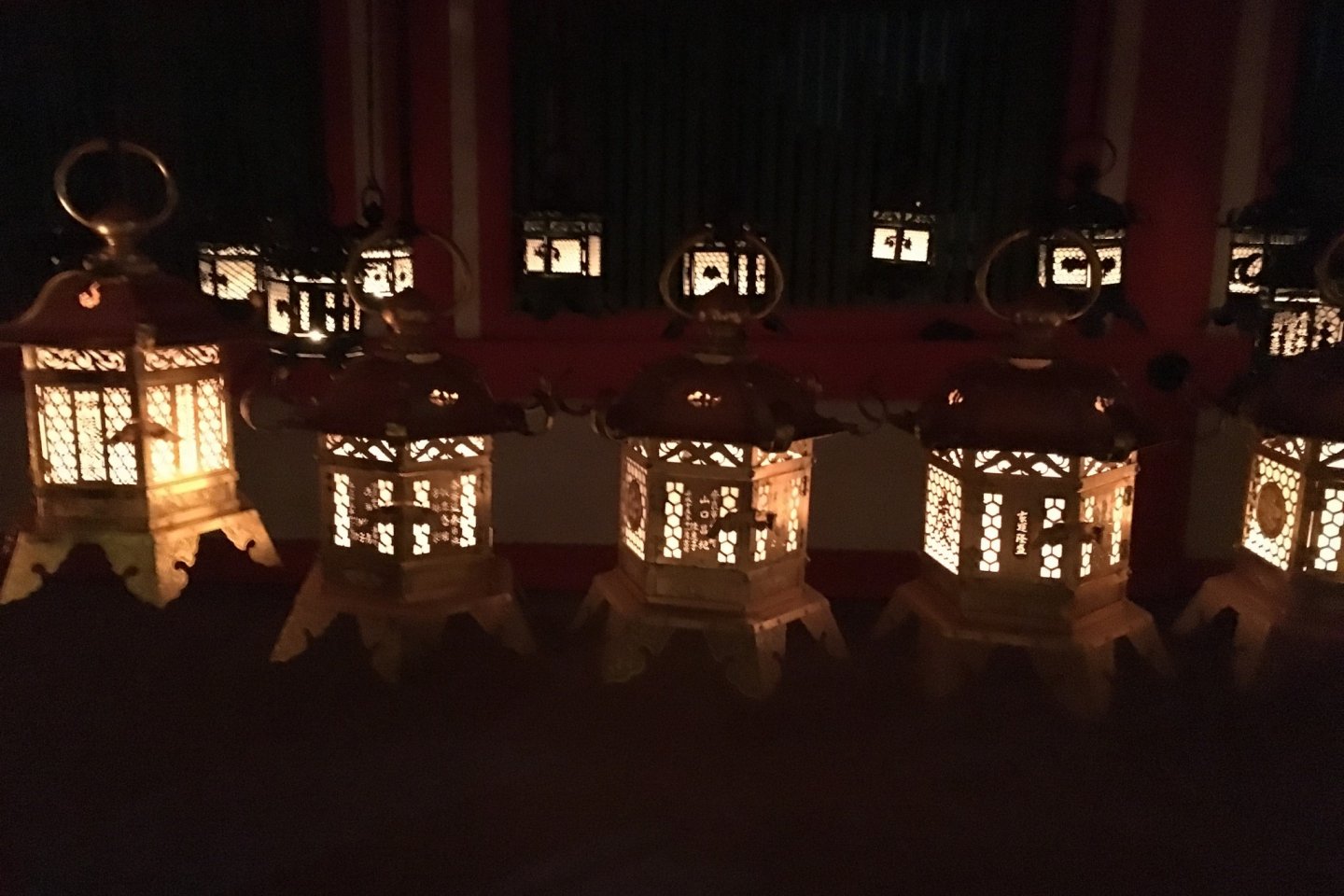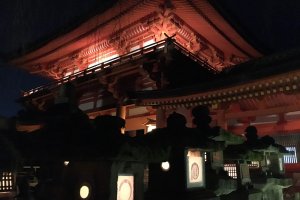It felt like a pilgrimage. My husband pushed our toddler in the stroller while I carried our baby up the minor but incessantly ascending hill. I was determined, despite the bitter cold of winter, to fulfill what we'd imagined on a sunny autumn day six long years ago; I wanted to see the 3,000 lanterns of Kasuga Taisha Shrine by candlelight.
Nestled in southeast Nara Park, Kasuga Shrine is worth a visit by day any time of year. Only twice a year, though, on February 3rd for Setsubun (the celebration of spring per the old Japanese calendar) and the 14th and 15th of August for Obon (a Buddhist holiday marking the return of the dead), all of its stone and hanging lanterns are alight with tea candles.
Though not a spiritual person, there is something about candlelight that is always magical to me. I was delighted as the electric lanterns in Nara Park segued to the first stone candlelit lanterns of the shrine. As it became darker, I sensed what it would have been like long ago when visitors to the shrine had only the lanterns to guide them; both literally and figuratively. The stone lanterns passed by torii gates and smaller shrines until they eventually led us to the hanging lanterns of the main sanctuary. This was the only portion of the complex that charged an entrance fee (500 yen per adult), and was clearly the prime attraction. To me, the experience did not disappoint. The candlelight within each bronze lantern seduced attention and showcased unique patterns I'd overlooked years ago by daylight. There were botanical designs, messages in Kanji, and some lanterns even depicted Nara Park's domesticated deer.
Both the stone and hanging lanterns were covered on all sides in white paper. The Nara Visitor's Center informed us that it was washi, traditional Japanese paper. It gave the lantern-light a steady, even appearance, while also serving (I can only assume) as a buffer to the natural elements. The absence of flickering led me to doubt more than once the presence of real candles, but they were there - all 3,000 of them. A shrine employee informed me that it takes volunteers only an hour or so to install the tea lights. Reflecting upon the sea of stone and bronze lanterns, I have to assume that it takes a lot of volunteers.
It wasn't long before our evening was overpowered by frozen extremities and the demands of two small kids. Nevertheless, our hearts were emblazoned with a special, candlelit family memory for the brisk walk home and beyond.
Don't worry if you were busy throwing beans at the devil this Setsubun, another common Japanese tradition. You can catch the lanterns this August or next February!



































